The org chart as an operational tool
by Kelly O’Hara
Once in a while, when time allows, we would like to share with you why we are so into HR software. For example, when it comes to the efficient use of HR data: The amounts of information that HR departments have to deal with is enormous. And often, time is not on their side. But there are a few ideas that might help sifting through all of the data to discover and make use of what is important for the specific situation. For one, org charts are great for that. “Org charts?” you might say aloud in wonder. Let us walk you through it in our new blog series “Ingentis HR gimmicks”!
When typically thinking of an org chart, people often imagine a family-tree style visualization of their company’s structure that is mainly used to look up somebody’s phone number or last name. But did you know that there’s so much more to an org chart? With the following use cases, we’d like to give you an overview of the full operational power org charts really provide.
The Central Directory
The most common use case for an org chart is probably how employees can easily refer to it as a directory of their entire company that lets employees know who’s who on certain teams and their structures. Directory-style org charts can be quite basic, showing name and title and potentially nothing else. However, they become a lot more useful when they’re injected with a greater amount of information.
At the very least, org charts should include employee photos. This makes it easier for colleagues to seek one another out, especially in larger organizations. Further details like phone number, location, or even whether or not the employee is on parental leave can be added to the chart for better visibility into the workforce.
A Better Way to Plan
A robust org chart tool can help in planning team, department, and company reorganizations to the point of contentment before putting them into action. Using an org chart to visualize a reorganization can help avoid overlooked problems like too many vacancies on a team. Tracking budgets for teams and departments within an org chart can ensure that any changes your company is planning are feasible based on what certain teams are allocated.
The more collaborative the planning within an org chart is, the better. With a tool that allows for real-time tracking as well as multiple users, teams are able to plan more efficiently, without having to send plans back and forth to one another. Instead, members of various different teams can work together within the chart so that no plans or versions are lost.
Tracking Roles, Responsibilities & Workloads
Sometimes it can be difficult to see just how overworked an employee is until it’s visualized. With an org chart that tracks roles and responsibilities, team members and managers can quickly see if one person is taking on the majority of a certain type of work or if it’s spread out over the proper amount of people.
Tracking KPIs like this within your org chart, makes it easier to plan for additional headcount if workloads become too much for an individual or an entire team. Being able to compare similar roles and workloads within an organogram enables managers to see how comparable teams are structured and which structures result in the best outputs.
Bring Remote Workers Together
Since many companies now offer their employees to telecommute either full- or part-time, it is important to have tools available to facilitate the collaboration between these remote workers and teams. An org chart can help remote employees get a better picture of what their team looks like and who they can go to within the organization.
As face-to-face time may be limited with remote workers and teams, it is crucial to have a structure in place that allows them to easily access the information of their colleagues. Since walking to someone’s desk to ask a question isn’t a possibility, org charts help by giving more visibility into a team mate’s information.
Ingentis offers org charting solutions as add-ons to leading HR systems such as SAP ERP HCM, SAP SuccessFactors, Oracle HR solutions, ADP Vantage HCM, ADP Workforce Now and more. Click on the following links to learn all about:


